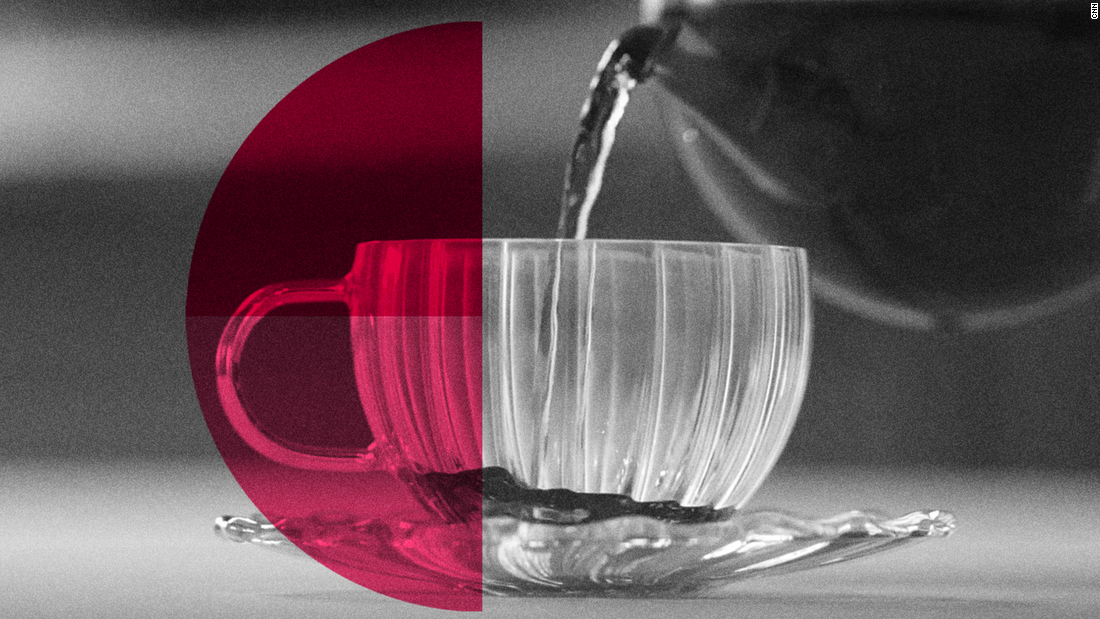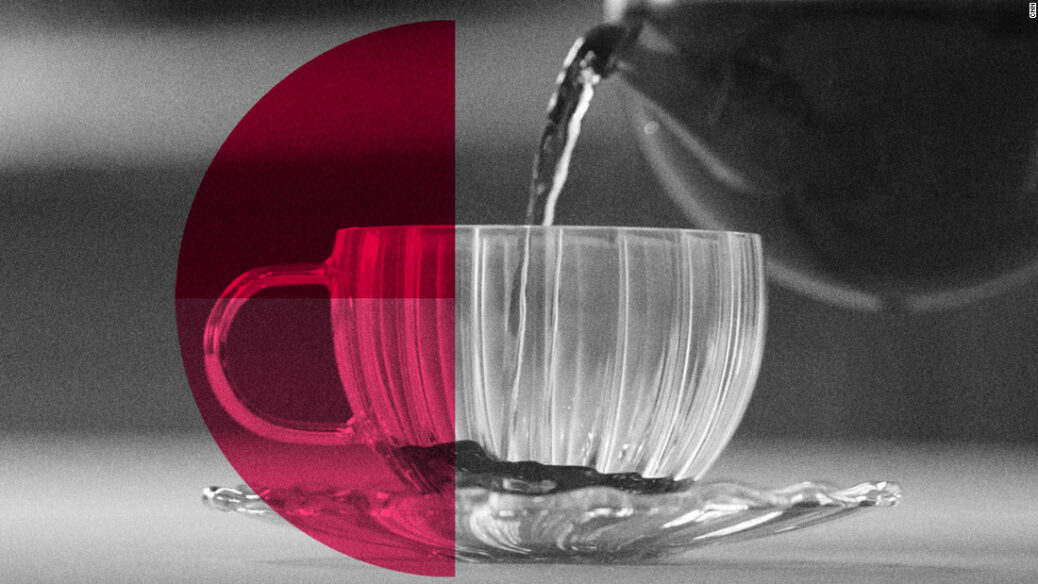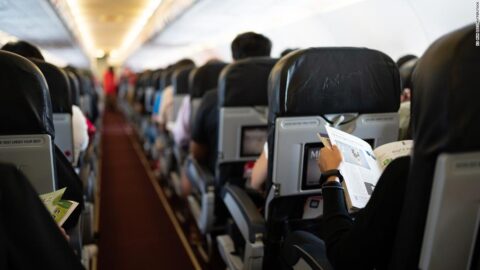
(CNN) — In June 2020, the people of Britain put their differences aside to condemn a brazen act of aggression against their country.
It was the most disrespectful flouting of Anglo-American conventions since a group of iffily-dressed Bostonians lobbed a consignment of loose leaf into the harbor.
But why are us Brits so comically precious about this unassuming brown liquid?
A bit of history: The thoroughly un-Britishness of tea
Tea is the Britishest thing ever, until you take two seconds to Google it. It’s grown, of course, in China, India, Africa, Sri Lanka… the list goes on, but aside from a few tiny producers, Britain’s not on it.
The world’s biggest tea-quaffing nation per head? Turkey. The teabag? Dreamed up by an American.
English spy James Bond loathes a cuppa so much that in the novel “Goldfinger” he snaps in a sexist/jingoist tirade: “I don’t drink tea. I hate it. It’s mud. Moreover, it’s one of the main reasons for the downfall of the British Empire. Be a good girl and make me some coffee.”
The Brits’ first fling with tea was thanks to a Portuguese woman; Catherine of Braganza arrived in England in 1662, making her tipple of choice a must-have fashion accessory among fawning aristocrats. (Royalty has gulped the stuff ever since, with Twinings being Elizabeth II’s label of choice.)
The East India Company quickly muscled in on this trend and monopolized trade using Indian-grown leaves, often produced via indentured labor. Thumping great taxes led to widespread smuggling, not to mention that whole Boston Tea Party escapade.
In 1784, Prime Minister William Pitt the Younger decided to bring in the Commutation Act, slashing tea taxes from 119% to 12.5%. Suddenly, the caffeinated thirst quencher was for the many not the few — and subsequently buoyed by zippy clipper ships (another American invention), an explosion of Sri Lankan plantations, and a temperance movement that would tut loudly if you so much as pictured a small glass of beer.
Tea’s benefits
But tea really won the hearts of the people because it was good for them. Thanks to the boiled water, it staved off cholera — not to mention the British weather. Sweetened with milk and sugar, it revived and energized laborers. And served with bread and cheese as high tea, it became a staple of working-class life — a thrifty stand-in for the evening meal.
How to make tea properly: The art (and science) of the perfect cuppa
Water temperature
Kate Halloran, tea innovation manager at Taylors, says that if using a pot, you should warm it up first by giving it a quick swirl with boiling water.
Everyone has their own tea ritual. But can we use science to give us a definitive answer?
Brewing time
One big sin is not brewing up for long enough. Farrimond’s advice is to pour just-boiled water into a mug with a teabag, then go and occupy yourself with something else for five minutes, allowing it to brew fully. You’ll thank yourself shortly.
“After the wait, you will find that the richly flavored tea will also be in the optimum temperature range for savoring all the flavors,” says Farrimond, “There are more than 30,000 flavor molecules in tea, all of which need time to emerge.” (By the way, don’t try to cheat by squeezing the bag: you’ll end up with a bitter brew.)
As well as releasing more flavor, leaving the bag in longer means more antioxidants and a ballsier hit of caffeine. “A cup brewed for 30 seconds has 35 milligrams of caffeine, whereas with a five minute brew, you get 50 milligrams of caffeine,” says Farrimond.
Plus, the drink will have cooled to around 37°C (body temperature) — optimum for sipping.
Tea bag or loose leaf?
But should we be using a teabag at all? “Loose leaf tea will probably give you the fullest taste as the best quality leaves are traditionally kept back for this,” Farrimond explains, “That said, because over 95% of tea drunk in the UK comes from teabags, my research has focused on teabag tea.”
Any mainstream teabag will do the trick, although Yorkshire Tea, Twinings, PG Tips and relative newcomer Teapigs are frontrunners, as far as British taste buds are concerned.
Proper vessels
A china mug or porcelain cup is ideal for serving your brew in; one major no-no, warns Farrimond, is a Styrofoam cup — the kind you get at football matches and roadside cafes. The synthetic material of these mops up flavor molecules, rendering the tea bland. Scum caused by hard water is also guilty of toying with the nuances of tea. If you’re in a hard water area, using a filter is a must. Special hard water teabags are worth considering too.
Then there are factors the average tea drinker wouldn’t think of. Even the color of your vessel can affect taste; for example, your brain associates a red mug with berries and ripeness — tricking you into thinking the tea is sweeter than it really is. Overall, the more you like your cup or mug, the more you’re likely to enjoy drinking from it. Guard your favorite chinaware with your life.
The milk question
As for *that* milk question? “Hotly debated,” says Farrimond. “The story goes that traditionally milk was added first to protect the fine bone china from shattering when pouring in the hot tea.” Yet he recommends adding milk second, especially if brewing from a teabag in an individual cup: “It gives longer for the tea to brew properly.
“It’s also easier to judge how much you’re adding, so that you can get the milkiness to your liking,” adds Farrimond.
In truth, of course, the perfect cup of tea is whichever one gives you the most pleasure. The important thing as a Brit is that once you’ve decided how you take your tea, you must die on that hill.
Where to drink tea in Britain
High tea has more or less evaporated from the British way of life, but its ritzy cousin afternoon tea lives on as an occasional treat. And while many tea rooms like Bettys still offer tea served a la Duchess of Bedford, the genre has been doing its fair share of experimenting lately.
In this complicated age, perhaps it’s time to return to the basic pleasures of a cup of tea. Sip one at the Bridge Cafe in London’s suburb of Acton, where defeated candidates from the UK version of “The Apprentice” TV show come to drown their sorrows. Or slurp it from a flask while rambling through Jane Austen country (tea crops up in many of her books, and she personally bought the family’s supply direct from Twinings to avoid inferior batches tainted with arsenic).
For the most satisfying brew of all, you needn’t travel further than your own kettle: “For me,” says Halloran, “a cup of tea is best enjoyed at home, either watching the football or curled up with a good book.”
Just remember to give the teabag five minutes. And stay well away from the microwave.






Recent Comments